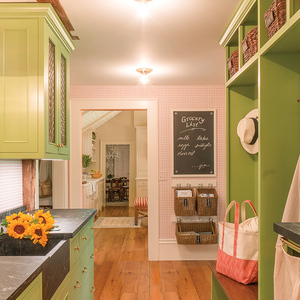Discussion Forum
Discussion Forum
Highlights
"I have learned so much thanks to the searchable articles on the FHB website. I can confidently say that I expect to be a life-long subscriber." - M.K.
Fine Homebuilding Magazine
- Home Group
- Antique Trader
- Arts & Crafts Homes
- Bank Note Reporter
- Cabin Life
- Cuisine at Home
- Fine Gardening
- Fine Woodworking
- Green Building Advisor
- Garden Gate
- Horticulture
- Keep Craft Alive
- Log Home Living
- Military Trader/Vehicles
- Numismatic News
- Numismaster
- Old Cars Weekly
- Old House Journal
- Period Homes
- Popular Woodworking
- Script
- ShopNotes
- Sports Collectors Digest
- Threads
- Timber Home Living
- Traditional Building
- Woodsmith
- World Coin News
- Writer's Digest



















Replies
Insulate the water pipes. Slope the drain pipe. Don't put either too close to the top of the slab.
thanks
Don't put them "in" the slab, but in the dirt below. Use the foam insulation wrap to protect the pipe where it passes thru the concrete (concrete and copper don't get along real well, and the insulation will also help to protect plastic pipe during the pour).
In the past, folks posted here that one penetration would likely be ok without insulation to protect it, but the more the surface contact the more the separation matters.
You're right, of course, to say to run them below the slab in trenches. I was picturing the last time I did it, which was in an elevated slab and so the pipes were in the slab. Not the typical case.
Id use nothing but PEX inside a plastic sleeve (for expansion and concraction of the pipe).
if you use PVC or other ridgid pipe under concrete youre asking for nothing but trouble at your joints or your stress cracks.
If possible put only your drain lines sub-slab. Your supply lines can be ran through framing in most cases. If you need supply lines beneath the slab run them for as short a distance as possible then stub into a wall and run from there. Running them inside insulated conduit is an excellent suggestion. Supply lines are much more likely to develop leaks than are drain lines; so having somewhat easier time to access them is a good idea.
In my area about half the houses are built on slab and the other half on raised foundation, so lots of pipes run through the slabs here. All copper pipes projecting through or under slabs are required by code to be sleeved in plastic and joints sealed by tape. Additional foam insulation may be used also, but should be sleeved since the foam can adsorb moisture from the ground which will eleminate the insulating effects of the foam. If your area has a problem with ants, they will tunnel through the foam insulation where it penetrates the slab and use that as a additional way to get into the house.
Was wondering about the effects of moisture on foam pipe insulation just today as I've been working on a new building.
Being from the north where slabs are uncommon it appears strange to me to see the piping run under the slabs and up thru the concrete.
Seems like an open invitation to future trouble and was wondering what added bonus doing it this way might be as opposed to a crawler. Are the financial savings that much to make it the status quo?
I use thin wall pvc coduit with long radius ells run under the slab with the hot sleeves insulated, we then pull the pex thru and connect to basins toilets etc.